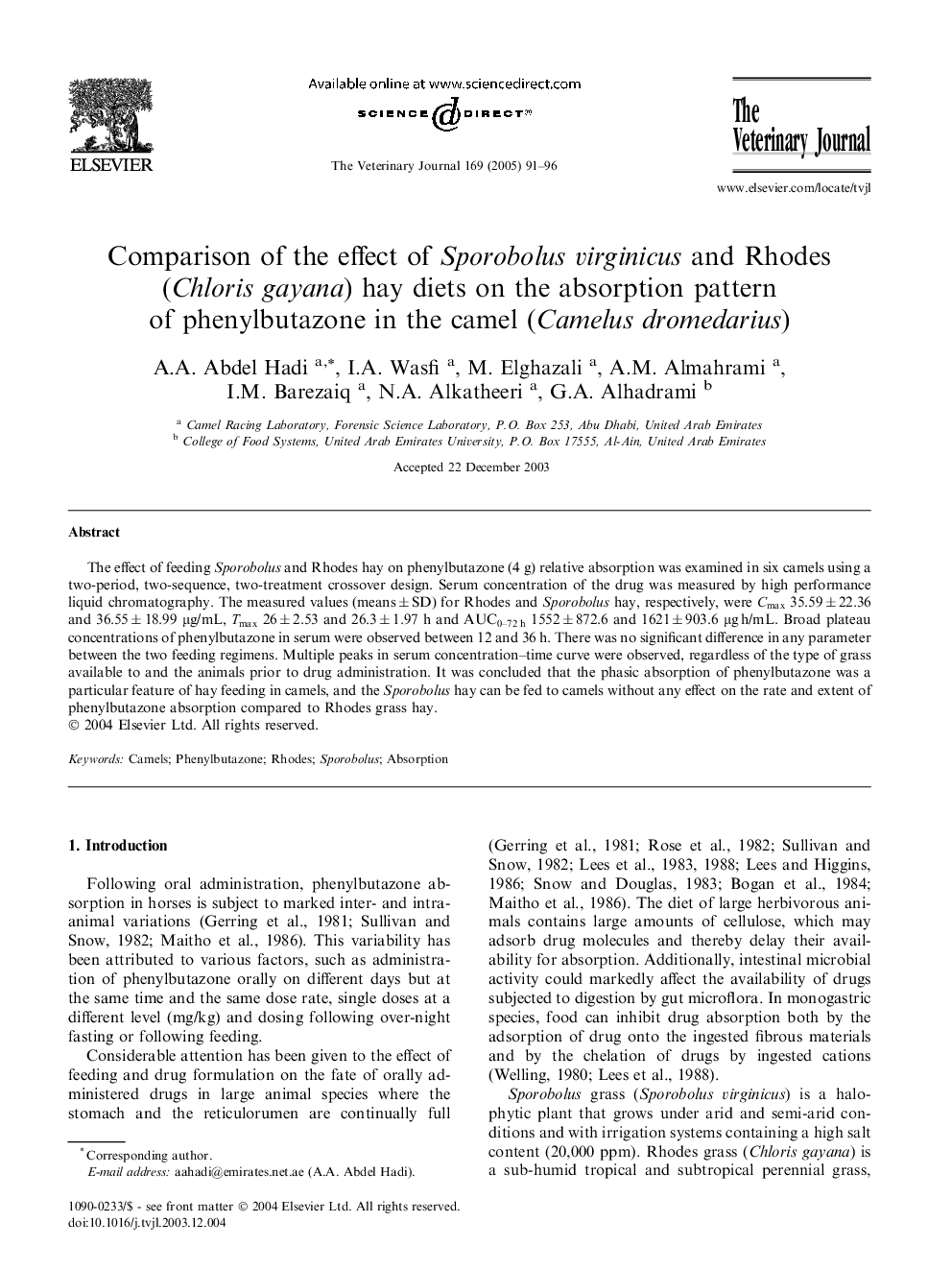| Article ID | Journal | Published Year | Pages | File Type |
|---|---|---|---|---|
| 8988889 | The Veterinary Journal | 2005 | 6 Pages |
Abstract
The effect of feeding Sporobolus and Rhodes hay on phenylbutazone (4 g) relative absorption was examined in six camels using a two-period, two-sequence, two-treatment crossover design. Serum concentration of the drug was measured by high performance liquid chromatography. The measured values (means ± SD) for Rhodes and Sporobolus hay, respectively, were Cmax 35.59 ± 22.36 and 36.55 ± 18.99 μg/mL, Tmax 26 ± 2.53 and 26.3 ± 1.97 h and AUC0-72h 1552 ± 872.6 and 1621 ± 903.6 μg h/mL. Broad plateau concentrations of phenylbutazone in serum were observed between 12 and 36 h. There was no significant difference in any parameter between the two feeding regimens. Multiple peaks in serum concentration-time curve were observed, regardless of the type of grass available to and the animals prior to drug administration. It was concluded that the phasic absorption of phenylbutazone was a particular feature of hay feeding in camels, and the Sporobolus hay can be fed to camels without any effect on the rate and extent of phenylbutazone absorption compared to Rhodes grass hay.
Keywords
Related Topics
Life Sciences
Agricultural and Biological Sciences
Animal Science and Zoology
Authors
A.A. Abdel Hadi, I.A. Wasfi, M. Elghazali, A.M. Almahrami, I.M. Barezaiq, N.A. Alkatheeri, G.A. Alhadrami,
